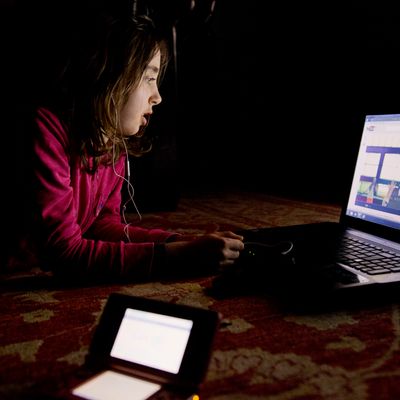
A new Pew research report took a look at Americans’ YouTube habits, particularly the habits of Americans with kids. The results: 81 percent of parents with kids 11 or younger said they let their children watch videos on YouTube, and 34 percent said they allow them to do so on a regular basis.
That doesn’t mean that parents were always thrilled with what they found; 61 percent of parents said they also found content “unsuitable for children.” The survey question doesn’t delve deeper into what “unsuitable for children” actually means, unfortunately. The survey also didn’t take into account whether the parents were using standard YouTube or the YouTube Kids app.
The Pew study also did 174,117 “random walks” to see what videos YouTube steered users towards. Starting with random videos on English-language channels with at least 250,000 subscribers, the researchers followed the recommended videos five clicks deep, using metrics like the popularity of the video, how recently the video had been uploaded, or the video’s overall rating to guide them. While the researchers found that YouTube consistently recommended videos that were both longer and more popular each step along the way, they also noticed certain videos kept on appearing many of the random walks — and many of those videos were aimed at kids.
Some of the videos aimed at children that kept popping up included:
“Learn Colors with Spiderman 3D w Trucks Cars Surprise Toys Play Doh for Children”
“GIANT Lightning McQueen Egg Surprise with 100+ Disney Cars Toys”
“Learn Colors with Spiderman w King Kong 3D Animals Play Fun Games for Kids | Cartoon for Children”
The problems with YouTube’s recommendation algorithm have been well documented, as has the the bizzarro world of YouTube videos aimed at kids. Kids, especially very young kids, will watch the same thing over and over and over. Content producers on YouTube hone in on what seems to draw young eyeballs and create endless variations on a basic theme, usually based around pop culture icons and with extremely low-budget production values, creating some truly odd — and sometimes outright disturbing — content that gets kids to keep on clicking. (On the other hand, entertainment that appeals to young kids has always been somewhat weird, from Teletubbies to beloved classic children’s books.)
I’ve got a 7-month-old daughter at home, and her mother and I already talk and worry about what to do when it comes to screen-time. She eyes our smartphones eagerly, obviously curious about what the flashing little rectangles we spend (too much) time looking at around her are. When she’s old enough to potentially operate a tablet on her own, I can see the appeal of having something to keep her occupied for 20 or 30 minutes while we take care of stuff around the house.
I’m not sure what we’ll do, though I don’t think we’ll be setting her loose into the weird web of kids’ YouTube videos. But we are also relatively lucky — we can afford to pay for services like Netflix or Hulu that have TV shows that (ostensibly) aren’t quite as weird and off-putting as some of the clips above. Millions of parents don’t have those resources, and YouTube is free.





























